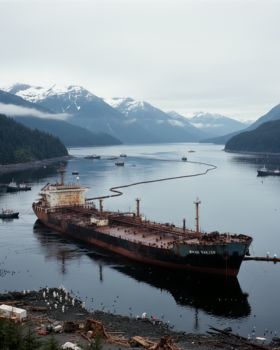Disclaimer
This article discusses the Mecca crane collapse and related contractor safety issues for educational purposes only. The information provided is based on publicly available reports and analysis. It is not intended to assign blame to any organization or individual but to highlight lessons learned and emphasize the importance of contractor management and safety practices.
The Mecca Crane Accident: A Tragic Reminder
The Mecca crane accident of September 2015 stands as one of the most devastating construction accidents in modern history. Taking place at the Grand Mosque during the Hajj pilgrimage season, the accident claimed the lives of 111 people and injured nearly 400. Beyond the immediate human tragedy, this event has been widely studied for the safety lessons it offers, sparking global conversations around risk management, accountability, and the role of contractors in high-risk projects.
For organizations across the world, the Saudi Arabia crane collapse highlights why safety and risk management cannot be treated as secondary considerations. Instead, they must be central to project planning, execution, and oversight. By reflecting on this event, businesses can better understand the importance of contractor management, compliance enforcement, and modern safety tools in preventing similar disasters.
What Happened in the Mecca Crane Accident?
On September 11, 2015, a massive crawler crane collapsed onto the Grand Mosque, where thousands of pilgrims had gathered. Reports at the time discussed high winds as a potential contributing factor, along with considerations such as crane stability, weather conditions, and the implementation of safety protocols.
Reports and analyses at the time raised questions around factors such as:
- Equipment readiness.
- Weather-related risks.
- Contractor responsibilities.
According to publicly available reports, the aftermath involved legal reviews and a reevaluation of safety protocols within Saudi Arabia and beyond. For the global construction sector, it became a sobering reminder of how gaps in contractor oversight and risk governance can result in catastrophic consequences.
Lessons from the Mecca Crane Accident
1. Contractor Accountability Must Be Non-Negotiable
One of the key lessons often cited from the Mecca crane accident is the importance of strong contractor accountability. Large-scale projects often involve multiple subcontractors, and without structured oversight, responsibilities can become fragmented. Clear lines of accountability, performance tracking, and compliance audits are viewed as essential measures to reduce risks.
👉 Practical Example: Organizations can require subcontractors to sign digital compliance declarations and track them centrally through contractor management platforms.
2. Risk Monitoring Should Be Real-Time
Weather conditions were a contributing factor in the collapse. Had there been effective real-time monitoring and proactive response protocols, the crane might have been secured in time. Modern safety systems now allow organizations to integrate weather alerts and hazard notifications directly into their workflows, helping contractors take immediate action when risks escalate.
👉 Practical Example: Companies can integrate weather data feeds into their safety software to automatically trigger alerts and halt operations during unsafe conditions.
3. Incident Reporting and Transparency Save Lives
In many construction accidents, warning signs are overlooked or underreported. A digital incident reporting system ensures that every near miss, hazard observation, or equipment malfunction is documented and acted upon. Some analyses noted that stronger near-miss reporting processes are considered valuable for reducing risks on high-risk sites.
👉 Practical Example: Contractors can deploy mobile reporting apps so workers can instantly log hazards or near misses with photos and location tags.
4. Regulatory Compliance Is a Continuous Process
The Saudi government tightened safety regulations after the collapse, but the lesson applies globally: compliance should be continuous, not reactive. Strong contractor management practices can help safety standards to be followed more consistently, with regular audits, inspections, and corrective actions built into the project lifecycle.
👉 Practical Example: Companies can schedule automated compliance audits and send reminders for expiring safety certifications to ensure ongoing regulatory alignment.
The Role of Contractor Management Software
While accidents like the Mecca crane accident involve complex factors, technology can play a critical role in strengthening safety culture. Contractor management software solutions offer tools that organizations can adopt to reduce risks and improve oversight, such as:
- Centralized Compliance Tracking: Ensuring every contractor meets safety certifications, training, and regulatory requirements before starting work.
- Digital Permit-to-Work Systems: Enforcing structured approval processes for high-risk activities such as crane operations, confined space entry, or working at heights.
- Incident and Near-Miss Reporting: Providing real-time reporting tools that empower workers and supervisors to flag hazards before they escalate.
- Risk Assessment Integration: Embedding hazard identification and control measures into daily workflows, helping supervisors respond quickly to emerging dangers.
- Performance Analytics: Using dashboards and reporting to identify patterns of unsafe behavior or recurring risks across contractor teams.
By embedding these features, contractor management platforms help organizations build a proactive safety culture rather than relying solely on reactive measures after an incident.
A Global Reminder for the Industry
The Mecca crane accident was not an isolated tragedy. Around the world, construction sites face similar risks involving cranes, scaffolding, trenches, and heavy machinery. Incidents such as the Seattle crane accident in 2019 and other structural collapses in Asia and Europe have also been studied as reminders of how lapses in safety protocols can contribute to tragic outcomes.
What sets apart organizations that avoid these tragedies is a commitment to proactive contractor oversight, continuous monitoring, and adopting modern tools that strengthen compliance. Many contractor incidents may be preventable when accountability, risk awareness, and technology come together.
Moving Forward
The construction industry will always involve risks, but tragedies like the Mecca crane accident remind us that those risks can and should be managed. By learning from the mistakes of the past, organizations worldwide have the opportunity to build safer worksites.
🚀 Learn how SHEQ Network can support safer workflows!
📧 info@sheqnetwork.com | 📞 +353 21 4536034
🔗 Learn more at sheqnetwork.com
📅 Ready for a personalized demo? Book your session here




